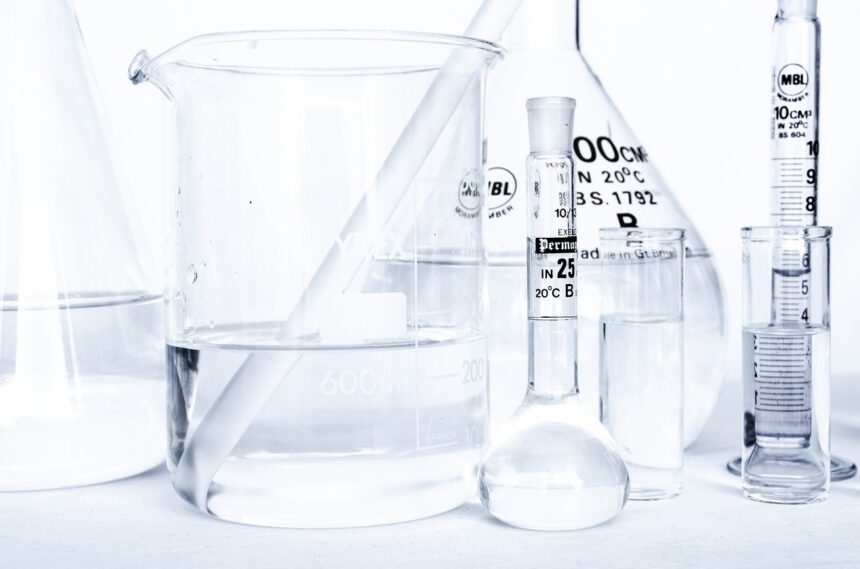Looking for a detailed comparison of AOD-9604 vs. Ipamorelin, including their research history, properties, and mechanism of action? In this comprehensive review, we look at studies that have suggested the hypothesized properties of Ipamorelin and AOD-9604, such as:
impact on muscle cell development
impact on fat tissues
- CHECALO -
impact on bone density
We will provide further information on the compound’s workings as suggested by research studies. We will also provide information about the supplier we highly suggest for obtaining research-grade Ipamorelin and AOD-9604 for laboratory use.
AOD-9604 Peptide: What is it?
The substance known as Anti-Obesity Drug 9604 is an analog of growth hormone (hGH) with alterations made to its C-terminal portion. Australian business Metabolic Pharmaceuticals produced this peptide fragment in the late 1990s. Studies suggest that synthetic hGH’s 191-amino-acid molecule may contain several mechanisms that produce many biological effects.
Research suggests the final fifteen amino acids of growth hormone (hGH)—the C-terminal segment, also known as AOD 9401 or hGH 177-191—may mediate the hormone’s effects on fat burning. As previously stated, the insertion of tyrosine to the N terminus is the only change to AOD-9604 from the original hGH 177-191 fragment. Except for the disulfide bridge between the two cysteine amino acids (Cys182 and Cys189), which are located at positions 7 and 14 in the case of AOD-9604, the other portions of the structure are indistinguishable from the 177-191 amino acid sequence of hGH.
Investigations purport that when a disulfide bridge is present, the peptide may become stable and active, and tyrosine is added to the N-terminus. AOD-9604 has been studied for a range of possible applications in research:
Most of its research has focused on its potential in the context of weight. Unfortunately, due to studies’ ineffectiveness, AOD 9604’s development as an anti-obesity adjuvant was halted in 2007.
In experimental animal models of osteoarthritis, AOD-9604 has been evaluated for possible pain management.
The Australian pharmaceutical firm Lateral Pharma looked into the peptide in the context of neuropathic pain and migraines, but the outcomes appeared to be no different from those of a placebo.
Ipamorelin Peptide: What is it?
Ipamorelin, or NNC 26-0161, is a pentapeptide produced from GHRP-1, a growth hormone secretagogue (GHS). GHRP-1 is an opioid receptor-agnostic met-enkephalin analog. Two GH secretagogues, GHRP-1 and Ipamorelin, have been hypothesized to increase growth hormone production by binding to the pituitary gland’s ghrelin receptor.
Findings imply that by inhibiting the production of other pituitary hormones, including ACTH and prolactin, Ipamorelin may promote growth hormone release more selectively than other GHS class members. It was created to replicate that action to potentially increase peristalsis in the digestive system as ghrelin does in the digestive system.
It has been suggested in laboratory research that Ipamorelin’s potential to increase GH and insulin-like growth factor-1 (IGF-1) may provide properties while presented. Among the theorized properties might be:
possible muscle cell development and proliferation
possible increase in contractile force
possible increase in bone mineralization and density
AOD-9604 vs. Ipamorelin
A thorough evaluation of how Ipamorelin and AOD-9604 may function suggests that Ipamorelin may increase growth hormone synthesis, and AOD-9604 might replicate some of the effects of hGH. The two compounds are believed to work differently and have different impacts. Regarding the processes by which they work:
When given to animal research models, Ipamorelin is speculated to increase hGH levels within 40 minutes by stimulating the pituitary’s GHS-R1a. Studies suggest the peptide might affect hGH production during a three-hour and two-hour half-life.
Research suggests that AOD-9604 does not seem to affect the animal’s production of hGH or IGF-1. Yet, via as-yet-ununderstood processes, it seems to enhance lipolysis in the organism. A preliminary study indicates these processes could be comparable to those with hGH supplementation. These may include enhanced lipolysis in adipocytes and activation of the adrenergic receptors.
Regarding the consequences that each may have:
Studies purport that Ipamorelin presentation may increase serum GH, hunger, and weight. According to preclinical research, Ipamorelin seems to cause a substantial increase in hunger and weight gain associated with both muscle and fat in the animals. Additionally, under catabolic situations, some animal studies have suggested a 54% rise in IGF-I and a decrease in muscular strength loss.
On the other hand, it seems that AOD-9604 might cause weight reduction, namely fat loss. In animal studies, it has been theorized to cause a significant reduction in body fat. One study indicated that obese Zucker rats given the peptide appeared to have 23% higher lipolytic activity, as evaluated by glycerol release from fatty tissue, and the rats seemed to have shed around half their body weight in only 19 days.
Ipamorelin has been speculated to promote weight and muscle growth, while AOD-9604 might potentially promote weight reduction.
References
[i] Valentino, M. A., Lin, J. E., & Waldman, S. A. (2010). Central and peripheral molecular targets for antiobesity pharmacotherapy. Clinical pharmacology and therapeutics, 87(6), 652–662. https://doi.org/10.1038/clpt.2010.57
[ii] Stier, H., Vos, E., & Kenley, D. (2013). Safety and Tolerability of the Hexadecapeptide AOD9604 in Humans. Journal of Endocrinology and Metabolism, 3(1-2), 7-15.
[iii] Jeoung, D. I., Allen, D. L., Guller, S., Yen, V., & Sonenberg, M. (1993). Mitogenic and receptor activities of human growth hormone 108-129. The Journal of biological chemistry, 268(30), 22520– 22524.
[iv] Ng, F. M., Jiang, W. J., Gianello, R., Pitt, S., & Roupas, P. (2000). Molecular and cellular actions of a structural domain of human growth hormone (AOD9401) on lipid metabolism in Zucker fatty rats. Journal of molecular endocrinology, 25(3), 287–298. https://doi.org/10.1677/jme.0.0250287
[v] Heffernan, M., Summers, R. J., Thorburn, A., Ogru, E., Gianello, R., Jiang, W. J., & Ng, F. M. (2001). The Effects of Human GH and Its Lipolytic Fragment (AOD9604) on Lipid Metabolism Following Chronic Treatment in Obese Mice andβ 3-AR Knock-Out Mice. Endocrinology, 142(12), 5182-518
[vi] Cox, H. D., Smeal, S. J., Hughes, C. M., Cox, J. E., & Eichner, D. (2015). Detection and in vitro metabolism of AOD9604. Drug testing and analysis, 7(1), 31–38. https://doi.org/10.1002/dta.1715
[vii] Hartvig, R. A., Holm, N. B., Dalsgaard, P. W., Reitzel, L. A., Müller, I. B., & Linnet, K. (2014). Identification of peptide and protein doping related drug compounds confiscated in Denmark between 2007- 2013. Scandinavian Journal of Forensic Science, 20(2), 42-49.
[viii] Isidro, M. L., & Cordido, F. (2010). Approved and OffLabel Uses of Obesity Medications, and Potential New Pharmacologic Treatment Options. Pharmaceuticals (Basel, Switzerland), 3(1), 125–145. https://doi.org/10.3390/ph3010125
DERECHOS DE AUTOR
Esta información pertenece a su autor original y fue recopilada del sitio https://www.14ymedio.com/blogs/consejos/what-difference-between-aod-9604-ipamorelin_132_1099369.html







